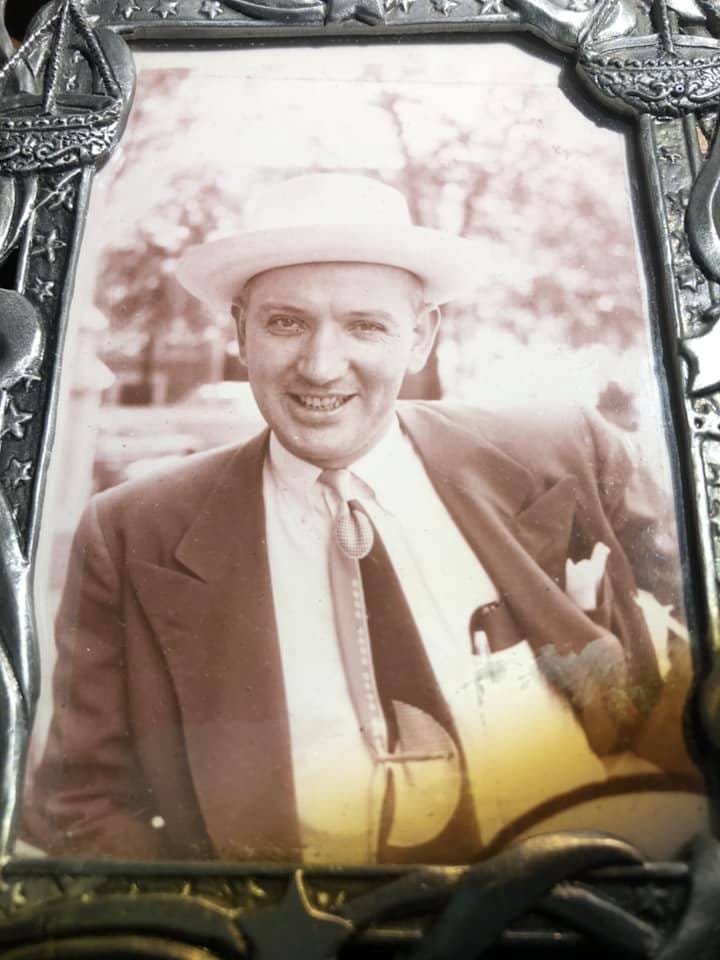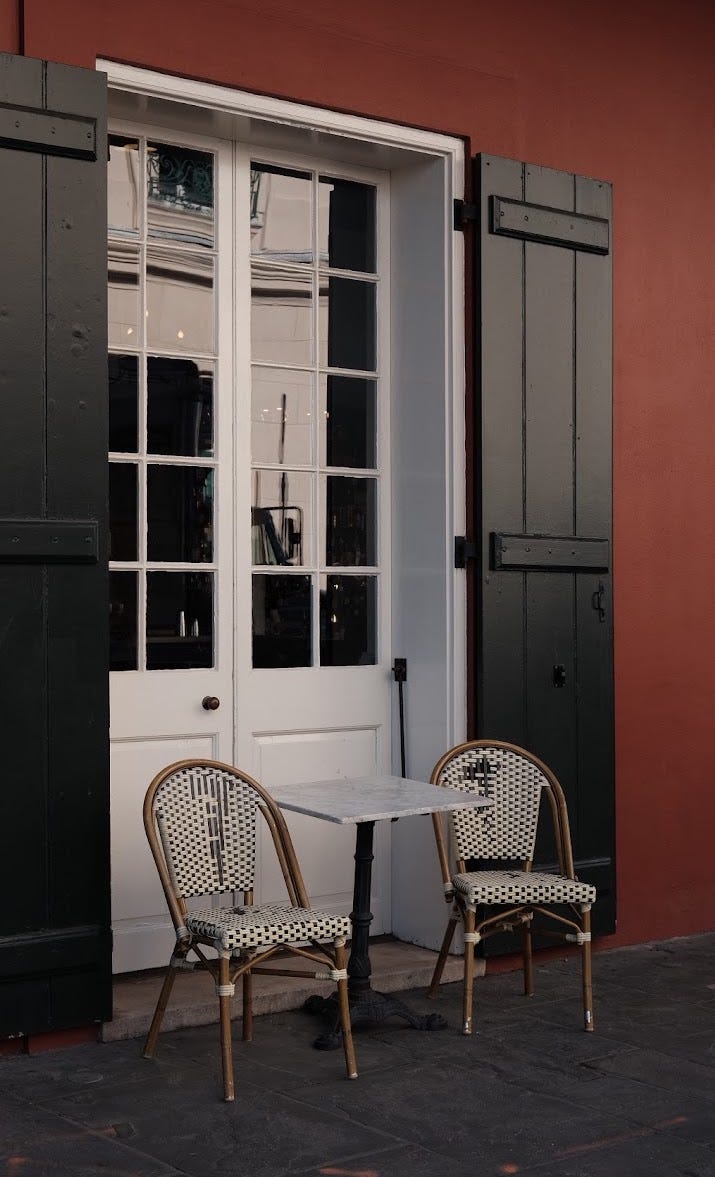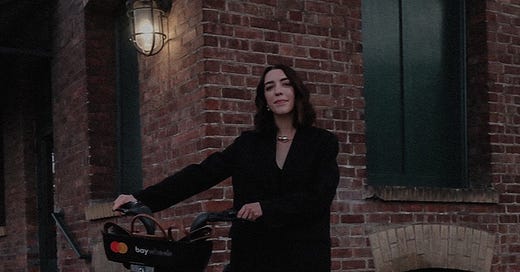Lately, I have been thinking about something my mother often told me. Back in the day, she would say, people would get dressed up to go downtown. This is not revelatory: look at any street photos from the middle of the last century and you’ll see tailoring, tweeds, brooches—and so many hats. But it’s the reason why that’s stuck with me. People, she said, dressed up as a sign of respect for the city itself. Out of recognition of the beauty of the built environment and the labor that went into creating the streets they walk on, the structures they pass by. Out of recognition of the others around them: the people who take their drink orders, the people across from them on the train.
Granted, my mother grew up in Chicago—a place that’s always been deservedly and self-consciously aware of its architectural beauty. And her attention to fashion might be a bit biased: her father had a menswear shop, and both he and my grandmother dressed. My mother inherited the idea that there is something essential in doing so, and passed it down to me.


For a long time, I didn’t think much of it. I knew that I loved clothing, and that the act of getting dressed connected with and shaped my emotions, my sense of self. A good outfit, and I would walk a little taller. When I felt like a mess, I dressed like a mess. I also knew that for me, cities and the life contained in their streets hold a certain amount of power. When I lived in New York and was having a bad day, all I needed to do to improve my mood was step out of my apartment and walk or bike through the streets, watching the people, seeing life unfold in the storefronts and restaurants. I would notice the colors, the sounds of people’s voices, and yes, what they were wearing. I would remind myself that there were so many people out there, each with their own experience and way of being in the world, and that I was a part of it too.
COVID, I think, forced me to think more about my love of fashion and public space—and how they intersect. Overnight, it seemed, both collapsed. Streets that were once filled with people emptied out. Storefronts shuttered and boarded up. And I do not need to remind you of the era of sweats and athleisure, the collective marveling at our daily encounters with “hard pants.” In those early months of the pandemic, I felt depleted. Of course, the news was horrific and distressing. But I had lost my cure. Going outside had necessarily transformed into something utilitarian. I went on runs, or power-walked to the grocery store and immediately home again, avoiding eye contact with others. We were all making ourselves as small and unobtrusive as possible. And behind us, the city—I had, by that point, moved to Seattle—offered nothing. It couldn’t.
What exactly I was missing, though, did not crystallize for me until my partner and I arrived in New Orleans in February of 2021. By the end of 2020, we had decided to move out of Seattle. Before arriving in our new home of California, we took a road trip along the southwestern edge of the US, seeking the sun and staying in massively discounted Airbnbs or, in the case of New Orleans, an unused apartment that my partner’s college friend’s parents generously lent us for a month. We drove into New Orleans in the midst of a brittle cold snap. Mardi Gras, already subdued that year because of COVID, deflated further in sub-freezing temperatures. I watched the meager parades pass from our window on the second floor, warmed by the determination of the people below, beads draped over their puffer jackets.
Days later, the sun broke through and we walked across the central business district—quiet and ghostly, in a way it’s still possible to feel in many downtowns years later—and into the French Quarter. There, more people were out, masked, moving around. I let my eyes rest on the palette of the neighborhood: the peaches and yellows and shades of turquoise blue. From the balconies, beads dangled and caught the afternoon light. We stopped in Jackson Square, where someone was playing a piano and a small crowd of people had gathered, respectfully distanced. And then I saw him—this man, impeccably dressed. A suit of deep mahogany, perfectly tailored. Deep brown shoes, a folded, ornately patterned pocket square, and a trim hat on his head. The woman he was with wore a long puffy coat—it was still cold, after all—and her arm was linked through his. Like us, they stopped and watched the piano music for a while, and then kept walking. It was three years ago, and I still remember this man’s look, and how it made me feel: like he had shown up for the city that day. That there was still something worth dressing for. I wish I had taken a picture, so you could see too. But I know I don’t need one: the memory won’t fade for me.


It’s been fascinating to see the evolution, lately, in the discourse around personal style. I love eavesdropping on—and sometimes participating in—Amy Smilovic’s and Tibi’s style classes and the questions she’s raised in so many of us around what one’s style is, what it conveys about you. The rush to identify the three words that encapsulate your style is thought-provoking and a useful exercise, and I’ve loved seeing people (i.e. Laura Reilly, Heather Hurst) grapple with the value of personal style over ambient trends. It feels, collectively, like we are reassessing our relationship with clothing and self-expression after the pandemic, and I certainly have a hunger to do the same.
Recently, though, I’ve wanted more discussion of why. Perhaps prompted by living now in the Bay Area and regularly encountering headlines and questions about living in a hollowed-out wasteland of a place (which it’s not, by the way, but let’s lean for a moment on the internet’s lack of nuance for the purpose of this point), I’ve been thinking more about what it means to continue to show up for the place in which you live. To go out and support businesses—or simply be present—in neighborhoods maligned in the news. To take walks and rediscover what you love about your city and your community. To add to the experience of a place by being a part of it (by that token, I love how Rachel Solomon of Hey, Mrs. Solomon describes her style, in part, as Miami—a city has a style that we can participate in and add to!). To be clear, I do not think that style is a solve for the many issues facing our cities and public spaces right now. Not even a bit. But for me, it increasingly feels like a small way to participate. To signal my care for a place and the people I come across in restaurants or bookstores. The people I pass on the street. When I dress myself, I feel more in touch with myself, and when I feel more in touch with myself, I feel more in touch with my community, with my city.
I love this quote from the 1989 Wim Wenders documentary on Yohji Yamamoto, Notebook on Cities and Clothes:
Identity …of a person, of a thing, of a place. Identity. The word itself gives me shivers. It rings of calm, comfort, contentedness. What is it, identity? To know where you belong? To know your self worth? To know who you are? How do you recognize identity? We are creating an image of ourselves. We are attempting to resemble this image… Is that what we call identity? Between the image we have created of ourselves and … ourselves? Just who is that, ‘ourselves’ ? … We live in the cities. The cities live in us. Time passes.
Find what you want to say and bring it to the world. Acknowledge that when you step outside, you become part of the experience of the place. The fabric of your city. Your presence is part of someone else’s field of vision. You are seen. Why not have fun with it? Why not show up in a way that is memorable, and resonant with who you are?
–
I’m not sure exactly what I want this space to evolve into. I love writing about my two loves–fashion and public space—and I am hoping to do more of that here. I welcome any thoughts!





Hi Ellie, this was a beautiful piece (and also lovely homage to your grandparents! I love the feelings it invokes of being present and in the moment in your surroundings (the city!) and the profundity of realizing that you are the city, and the city is you 🤯
Hi Ellie, this was a beautiful piece (and also lovely homage to your grandparents! I love the feelings it invokes of being present and in the moment in your surroundings (the city!) and the profundity of realizing that you are the city, and the city is you 🤯